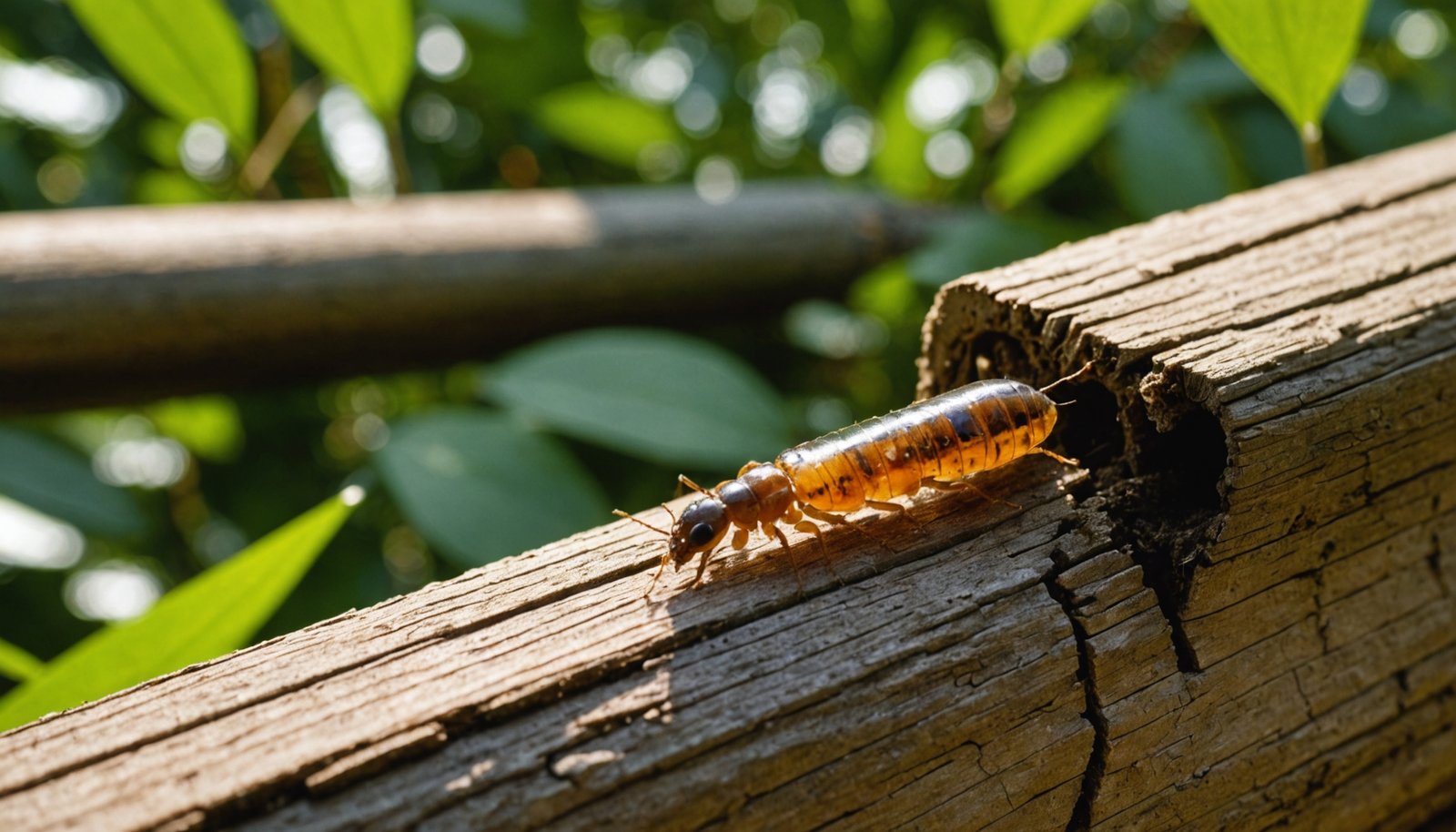Can Termites Make You Sick? Myths Vs Facts About Health Risks
While termites don’t directly transmit diseases, they can still affect your health in several ways. You might experience allergic reactions from exposure to termite droppings and saliva, including skin rashes and respiratory issues. Their infestations create moisture-rich environments that promote dangerous mold growth, and chemical treatments used for control can cause additional health concerns. Understanding these risks will help you protect yourself and your family more effectively.
Key Takeaways
- Termites do not directly transmit diseases to humans, but their presence can trigger allergic reactions and respiratory problems.
- Termite droppings and wood dust become airborne irritants that can cause breathing difficulties and eye irritation.
- Termite infestations create moist environments where harmful mold and fungal spores can flourish, leading to respiratory issues.
- Chemical treatments for termites can cause health problems like skin irritation and neurological symptoms if not properly applied.
- Vulnerable populations, including children, elderly, and those with asthma or compromised immunity, face higher health risks from termite-related issues.
Understanding Direct Health Effects From Termite Contact

How does direct contact with termites affect human health? While termites don’t directly transmit diseases to humans, they can trigger allergic reactions and irritative responses in some people.
If you’re sensitive to termite allergens, you might experience skin rashes or respiratory symptoms from exposure to their droppings (frass) and saliva.
You’ll want to be particularly careful about airborne particles from termite activity, as these can irritate your mucous membranes, including your eyes and throat. Living in poorly ventilated homes with prolonged termite exposure can significantly increase your risk of respiratory issues.
Some people have even suffered asthma attacks due to termite-related allergens. While direct infections from termites are extremely rare or nonexistent, the allergens they produce can cause significant discomfort, especially if you’re already prone to allergies or have respiratory sensitivities.
The Hidden Respiratory Risks of Termite Infestations

While most people associate termites with structural damage, these pests can pose serious respiratory health risks that often go unnoticed. When termites infest your home, they create a perfect storm of respiratory hazards. Their droppings, frass, and wood dust become airborne through HVAC systems, potentially triggering asthma attacks and allergic reactions like sneezing and watery eyes.
The problem doesn’t stop there. Termites create moisture-rich environments that promote mold growth, leading to a dangerous combination of airborne particles. The fungal spores they carry can include Aspergillus fumigatus species, which poses additional infection risks.
You’re especially at risk if you’re asthmatic or immunocompromised, as long-term exposure can develop into chronic sinusitis or respiratory infections. Even if you’re healthy, you might experience respiratory symptoms from the high concentration of termite-related particles and mold spores in your living space.
Chemical Control Methods and Human Health Concerns

When dealing with termite infestations, many homeowners turn to chemical control methods as their first line of defense. While these treatments can effectively protect your home for up to 12 years, they also pose significant health risks if not handled properly. Non-toxic alternatives like beneficial nematodes offer safer solutions for termite control without chemical exposure risks.
Professional application is essential, as improper use can lead to serious health consequences.
The most important health concerns you’ll need to take into account include:
- Exposure to termiticides can cause symptoms ranging from mild skin irritation to severe respiratory issues
- Pets are particularly vulnerable to chemical treatments and may become ill if they contact treated areas
- Long-term exposure might result in neurological effects, including tremors and seizures
To protect yourself, always guarantee proper ventilation during treatment and leave the application to certified professionals who understand safety protocols and proper chemical handling procedures.
Environmental Impact and Indoor Air Quality
The presence of termites in your home extends far beyond structural damage, creating a cascade of environmental and health concerns that directly impact indoor air quality.
When termites infest your walls, they increase moisture levels that promote mold growth, releasing harmful spores into your living space. You’ll notice these effects through symptoms like coughing, wheezing, and sinus problems.
The situation becomes more complex when you factor in treatment methods. While chemical treatments can eliminate termites, they often release VOCs that may cause headaches, dizziness, and respiratory issues.
You’re also dealing with termite frass, which acts as an airborne allergen. These particles, combined with increased moisture and mold, can trigger asthma attacks and allergic reactions, particularly affecting children and elderly residents in your household. Termites create extensive hollow spaces in wood, which can harbor additional moisture and mold growth behind your walls.
Structural Damage and Associated Safety Hazards
Because termites silently devour wooden structures from the inside out, your home’s integrity could be at serious risk long before you notice any visible signs. Each year, these destructive pests cause $5 billion in damage across 600,000 U.S. homes, with average repair costs around $3,000 that aren’t typically covered by insurance.
The safety risks to you and your family are significant when termites compromise your home’s structural components:
- Weakened support beams and floor joists can suddenly collapse, creating dangerous falling hazards
- Damaged door and window frames may prevent quick escape during emergencies
- Sagging floors and compromised wooden structures increase your risk of trips, falls, and injuries
Elderly individuals face heightened danger from collapsing furniture pieces that have been weakened by termite activity.
Early detection through professional inspections is essential, as colonies can grow unnoticed for years before visible damage appears.
Conclusion
While termites won’t directly make you sick through bites or disease transmission, you’ll want to take infestations seriously due to indirect health risks. Their presence can trigger allergies and respiratory issues from droppings and shed wings. The bigger concerns are structural damage that creates safety hazards and exposure to treatment chemicals. Don’t ignore signs of termites – address them promptly to protect your health and home.

